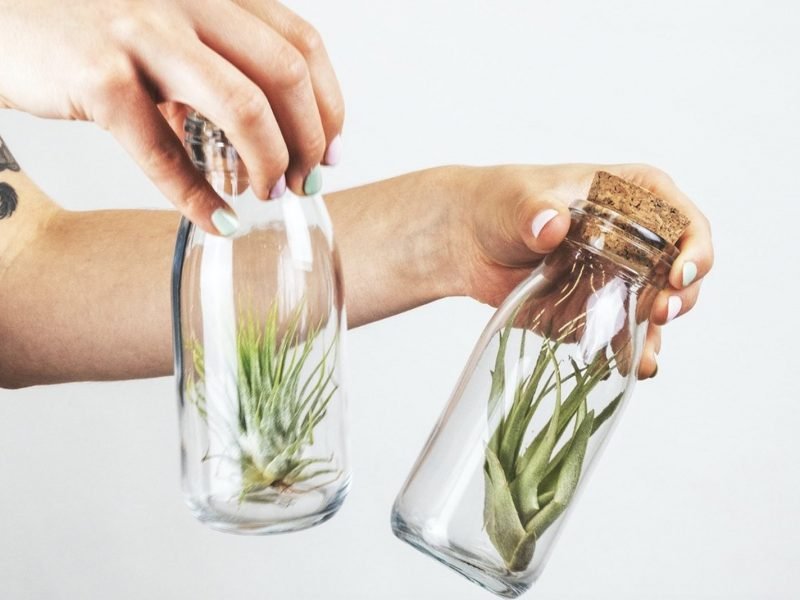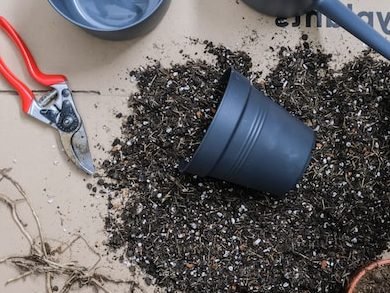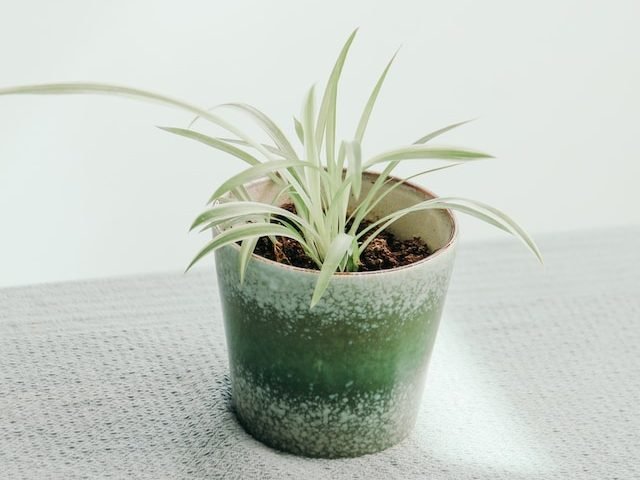
Overwatering is one of the biggest killers of houseplants and something that even the most experienced plant parents are guilty of from time to time. Sometimes we don’t adjust our watering schedule enough to fit the environment as colder temperatures and darker days mean we need to reduce how much we are watering.
Overwatering can also happen because we just care for our plants too much and want to give them more water to thrive, when in fact their soil is still pretty soggy from the last time you watered.
Whatever the cause, overwatering can very quickly mean you are saying goodbye to some of your beloved plants. This is why it’s crucial to know what the signs of overwatering are so you can spot the issue early and hopefully start fixing it before it’s too late.
Yellow leaves are a sign of overwatering
If your houseplant has developed yellow patches across the leaves, then this is a definite sign of overwatering, especially if the leaves look quite sickly and limp as well. Overwatering attacks the root system and over time it can’t sustain the healthy growth anymore, meaning some of the leaves start to turn yellow.
The yellow leaves can form in a variety of ways and this can depend on the plant type too. Sometimes you’ll notice yellow spots, other times it will be quite patchy and sometimes the entire leaf will just turn yellow and droopy.
There are a range of other reasons that cause yellow leaves, so it’s important to check the soil moisture and the root system to ensure it’s overwatering. Frustratingly, underwatering can also cause some leaves to turn yellow so the last thing you want to do is cut back on watering if this isn’t the issue.
If your plant is losing leaves, this also may be due to overwatering
It can be quite upsetting when our houseplants start to lose leaves and it’s important that you get to the bottom of the problem as soon as possible. If overwatering is causing your plant to lose leaves then it means the problem has been going on for quite some time so bringing your plant back to full health can be a challenge.
The reason why overwatering can cause your houseplant to lose leaves is similar to what we’ve written above when it comes to yellow leaves. In fact, if the leaves that are falling off are yellow, this is another sign your houseplant has been overwatered. Once the root system has started to rot in the waterlogged soil, your plant simply can’t keep that level of healthy growth so it will lose some of its leaves to conserve energy.
As with all of the reasons, inspect the soil and root system to make sure that this is the cause.
Soggy potting mix indicates overwatering
It might seem obvious but it can be something that us plant parents often forget when it comes to plant care. If you’re worried about overwatering your plants then ensuring the soil has time to dry out between waterings is the number 1 way of doing this. The only thing you need to look out for here is any differences between houseplant varieties as some plants need their soil to dry out fully, whilst others like some consistent moisture. Get to know your houseplant type to figure out how moist the soil should be.
If you fear you’ve overwatered your houseplant then the best thing to do is take it out of the pot. This will allow you to see how soggy the potting mix is and we recommend replacing it with dry mix if waterlogged. Don’t wait for the soil to dry out naturally as this risks the root system becoming damaged. You’ll want to either do this outside or use a plastic sheet when taking your plant out of its pot so that you don’t spill soggy soil all over your home.
Smelly soil indicates consistent overwatering
Another great tip when it comes to diagnosing overwatering is to smell the potting mix. This may seem odd but if there is a lot of water in the soil it can start to smell pretty bad! This is because the water will stagnate in the soil.
A black mushy root system can be caused by overwatering
The best way to rescue an overwatered plant is to remove it from its pot, replace any waterlogged soil with fresh mix and trim away any roots. If the root system has started to rot due to overwatering then it will often turn very dark brown or black in colour. The roots will also be quite soft to touch so this is another sign that your plant is suffering from root rot.
If you do find that your houseplant has developed a rotting root system then you need to remove the rotten parts immediately. This will allow your plant to begin the recovery process and means your plant won’t waste valuable energy trying to revive the root system. Use clean sharp scissors to remove the dead or dying parts of the root system.
Those are the most common signs that you have been overwatering your houseplant. It is one of the biggest killers of plants because you won’t often see warning signs above the soil untilt the issue has been going on for some time. Remember to double check the potting mix and the root system before changing anything about how you water your plants.
In future, to prevent overwatering damaging your houseplants, ensure that you adjust your watering schedule based on environmental factors and remember that these change throughout the year. Don’t stick to a rigid watering schedule all year around as your plant’s watering needs will change dramatically. Instead, check the soil moisture using a moisture meter or use other tips like the chopstick method or simply lifting up your plant to know how soggy it is. All of these methods will help ensure you are giving your plant enough time to dry out between waterings.















